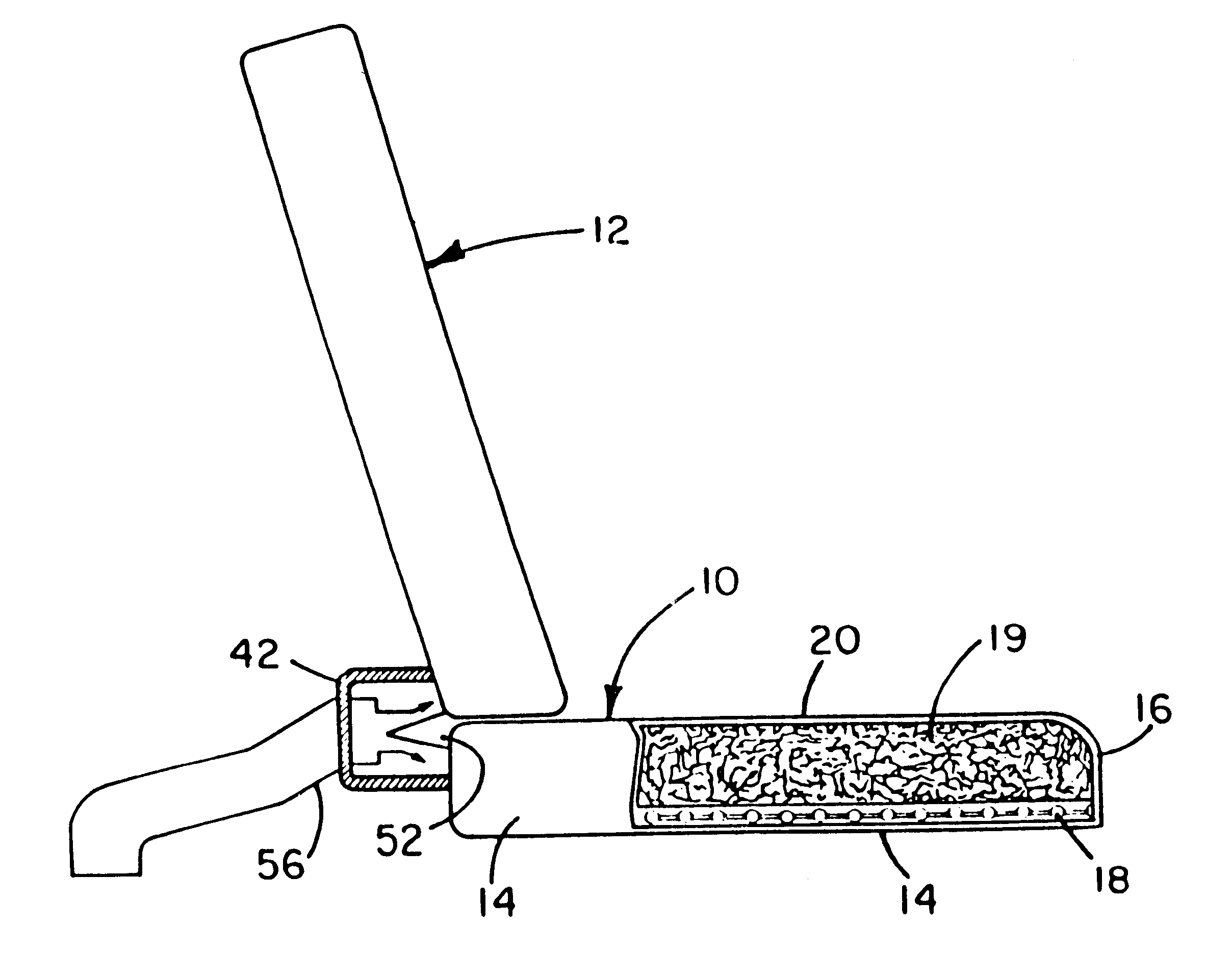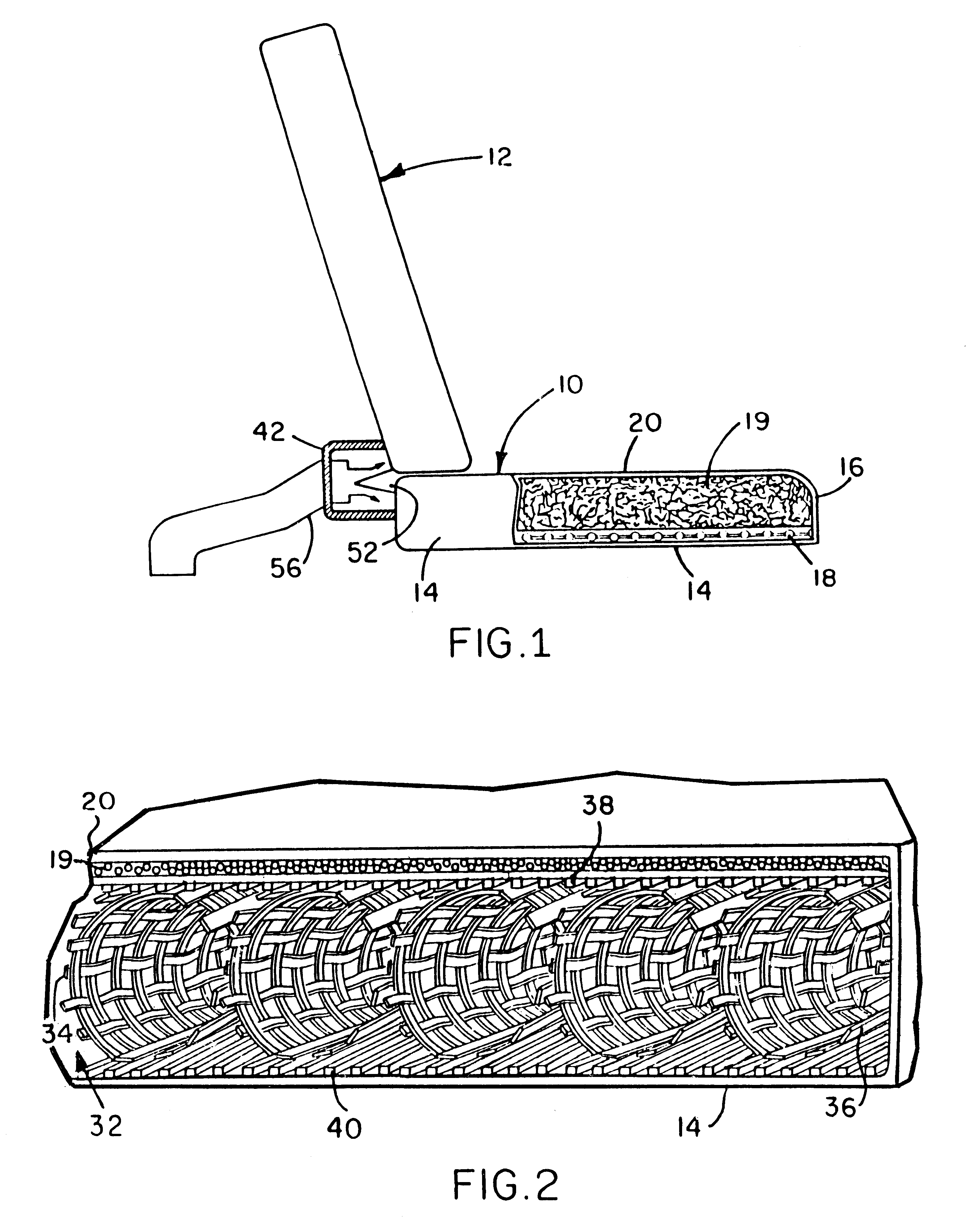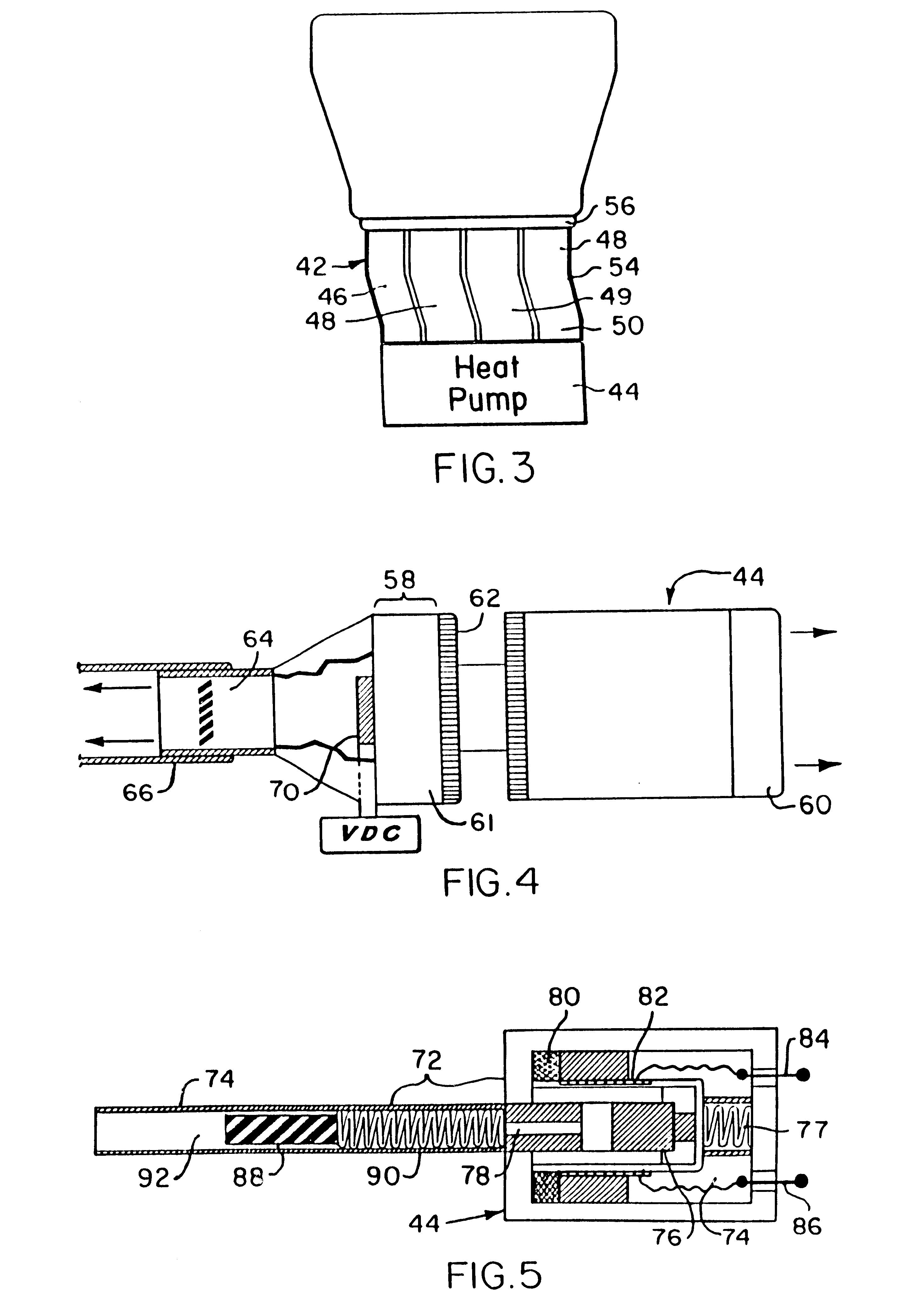Selectively cooled or heated cushion and apparatus therefor
- Summary
- Abstract
- Description
- Claims
- Application Information
AI Technical Summary
Benefits of technology
Problems solved by technology
Method used
Image
Examples
Embodiment Construction
Turning now to the drawings and particularly FIG. 1, the invention is shown and described in connection with a pair of cushions 10 and 12 which are manufactured in accordance with the principles of the invention and are particularly adaptable for use in an automotive vehicle where the cushion 10 comprises a seat and the cushion 12 is a backrest. Construction of the two cushions 10 and 12 is identical, therefore, only the construction of cushion 10 will be given in detail.
With additional reference to FIG. 2, cushion 10 is seen to include an outer lower layer 14 covering the cushion bottom, two lateral sides and rear side which can be made of any of a number of different materials with the primary physical characteristic being that it is impermeable to the passage of air and moisture therethrough. An internal portion 16, to be more particularly described later forms a plenum for receiving temperature conditioned air and at the same time providing comfort and possessing necessary rigid...
PUM
 Login to View More
Login to View More Abstract
Description
Claims
Application Information
 Login to View More
Login to View More - R&D
- Intellectual Property
- Life Sciences
- Materials
- Tech Scout
- Unparalleled Data Quality
- Higher Quality Content
- 60% Fewer Hallucinations
Browse by: Latest US Patents, China's latest patents, Technical Efficacy Thesaurus, Application Domain, Technology Topic, Popular Technical Reports.
© 2025 PatSnap. All rights reserved.Legal|Privacy policy|Modern Slavery Act Transparency Statement|Sitemap|About US| Contact US: help@patsnap.com



